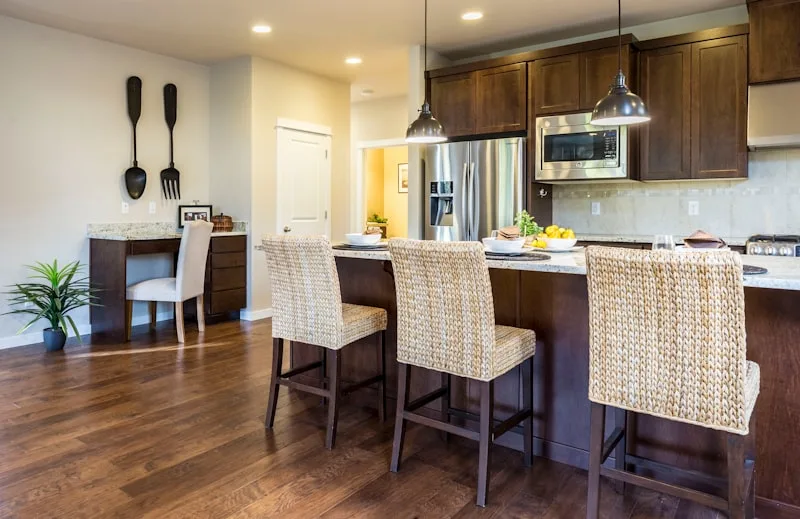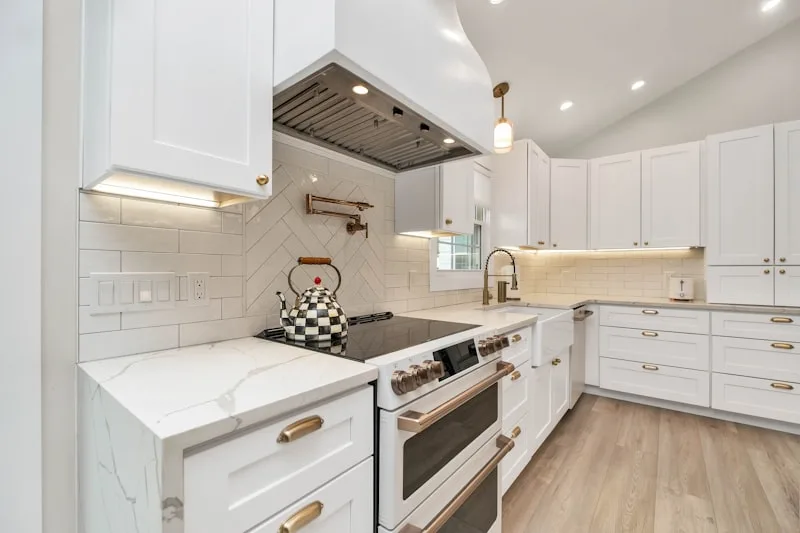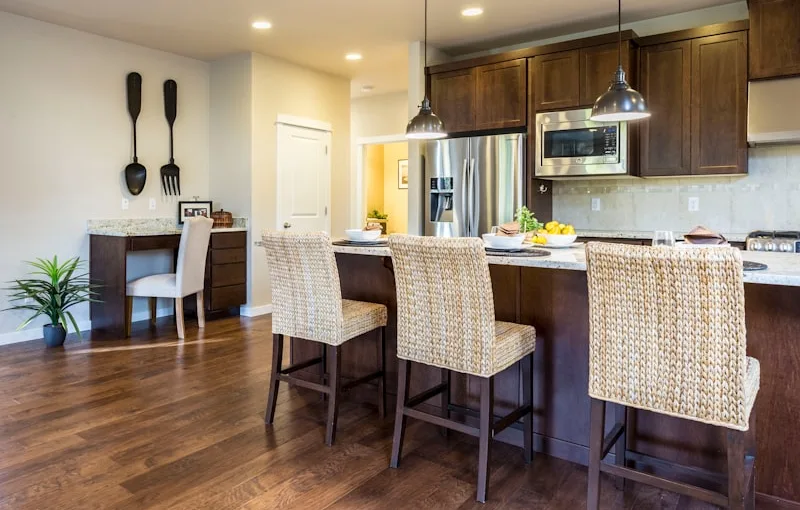This polyurethane-based adhesive expands as it cures, which means it fills in gaps and creates a bond that’s tough to beat. Think of it as a strong handshake that not only holds on tight but also gets stronger over time. So, if you’ve got a loose cabinet door or a broken drawer front, Gorilla Glue can be your best friend. Just remember to clamp the pieces together while it dries—this is like giving your cabinets a warm hug while they set.
Now, you might be asking, “Is it safe for kitchen use?” Absolutely! Once fully cured, Gorilla Glue is non-toxic, making it safe for areas where food is prepared. However, it’s always a good idea to keep it away from direct food contact, just to be on the safe side.
Can Gorilla Glue Be the Ultimate Solution for Sturdy Kitchen Cabinets?
First off, Gorilla Glue is known for its incredible bonding strength. It’s like the Hulk of glues—once it sticks, it’s not going anywhere! Whether you’re dealing with a loose door or a wobbly shelf, this glue can save the day. Just a little dab can transform your cabinets from shaky to solid in no time. Plus, it expands as it dries, filling in gaps and creating a bond that’s tougher than a two-dollar steak.
Now, you might be wondering, “Is it easy to use?” Absolutely! Just make sure to follow the instructions. A little water activates the glue, and before you know it, you’ll have a bond that can withstand the test of time. It’s like giving your cabinets a new lease on life without the hefty price tag of a full renovation.
But wait, there’s more! Gorilla Glue is also versatile. Whether your cabinets are made of wood, laminate, or even metal, this glue can handle it all. It’s like having a Swiss Army knife in your toolbox—ready for any challenge that comes your way.
Gorilla Glue vs. Traditional Wood Adhesives: Which Holds Up Best for Kitchen Cabinets?
Gorilla Glue is like the superhero of adhesives. It’s incredibly strong and can bond a variety of materials, not just wood. Imagine it as the Swiss Army knife of glues—versatile and tough. It expands as it dries, filling in gaps and creating a solid hold. This can be a game-changer for kitchen cabinets, especially if you’re dealing with uneven surfaces or tricky joints. However, that expansion can also be a double-edged sword. If you’re not careful, it might ooze out and create a mess that’s hard to clean up.
On the flip side, traditional wood adhesives, like PVA (polyvinyl acetate), are the tried-and-true options. Think of them as the reliable old friend who’s always there when you need them. They dry clear and provide a strong bond specifically designed for wood. Plus, they’re easier to work with—no expansion worries here! You can apply them neatly, and they won’t create a sticky situation if you accidentally overapply.
So, which one holds up best for kitchen cabinets? It really depends on your project. If you’re looking for a quick fix and need something that can handle a variety of materials, Gorilla Glue might be your go-to. But if you want a clean, precise application that’s perfect for wood, traditional adhesives are hard to beat. It’s like choosing between a multi-tool and a trusty hammer—both have their place, but knowing when to use each is key!
Kitchen Cabinet Repair: Is Gorilla Glue the Secret Weapon You Need?
Imagine your kitchen cabinets as the backbone of your culinary kingdom. They hold everything together, from your favorite spices to that fancy dinnerware you only use on special occasions. So, when they start to show signs of wear and tear, it can feel like a mini-crisis. That’s where Gorilla Glue comes in, like a trusty sidekick ready to save the day. This adhesive is known for its incredible strength and versatility, making it a go-to for many home improvement enthusiasts.
Now, you might be wondering, “Can I really use Gorilla Glue on my cabinets?” Absolutely! Whether you’re fixing a loose joint or reattaching a fallen door, this glue can bond wood, metal, and even ceramic. Just think of it as the superhero cape for your cabinets—once applied, it can hold everything together like magic. Plus, it expands as it dries, filling in gaps and creating a solid bond that can withstand the test of time.
But hold on! Before you dive in, remember that preparation is key. Clean the surfaces you’re working on, and don’t forget to clamp them together while the glue sets. It’s like giving your cabinets a warm hug while they heal. So, if you’re looking for a reliable, budget-friendly solution for your kitchen cabinet woes, Gorilla Glue might just be the secret weapon you’ve been searching for.
The Pros and Cons of Using Gorilla Glue for Your Kitchen Cabinet Projects
First off, let’s talk about the pros. Gorilla Glue is known for its incredible strength. Imagine trying to hold two pieces of wood together with a flimsy tape—frustrating, right? Gorilla Glue, on the other hand, creates a bond that’s tougher than a two-dollar steak. It expands as it dries, filling in gaps and ensuring a solid hold. Plus, it’s waterproof! So, if you accidentally spill some spaghetti sauce, your cabinets won’t fall apart.

Now, onto the cons. While Gorilla Glue is a powerhouse, it can be a bit messy. That expansion I mentioned? It can ooze out and create a sticky situation if you’re not careful. And let’s not forget about the drying time. Unlike quick-drying adhesives, Gorilla Glue can take several hours to set completely. If you’re in a hurry to finish your project, this might feel like watching paint dry—agonizingly slow!
Another thing to consider is its versatility. While it works wonders on wood, it’s not always the best choice for every material. If you’re working with laminate or metal, you might want to explore other options. Think of Gorilla Glue as a trusty Swiss Army knife—it’s great for many tasks, but not every tool is right for every job.
So, whether you’re a seasoned DIYer or just starting out, weighing these pros and cons can help you decide if Gorilla Glue is the right fit for your kitchen cabinet project.
Will Gorilla Glue Stand the Test of Time in Your Kitchen Renovation?
Imagine your kitchen as the heart of your home, where family gatherings and culinary adventures happen. You need a reliable adhesive that can handle everything from fixing cabinets to securing countertops. Gorilla Glue is like that trusty friend who always shows up when you need them. Its waterproof formula means it can tackle spills and splashes without breaking a sweat. Think of it as a superhero for your kitchen projects!
But here’s the kicker: not all surfaces are created equal. While Gorilla Glue works wonders on wood, ceramic, and even some plastics, it’s essential to prep your surfaces properly. Clean them well, and you’ll create a bond that’s as strong as a bear hug. Plus, it expands as it dries, filling in gaps and ensuring a tight seal. Just imagine how satisfying it is to see everything come together seamlessly!

Now, you might wonder about longevity. Will it hold up against the heat of your stovetop or the humidity from your dishwasher? The answer is a resounding yes! Gorilla Glue is designed to endure the challenges of a busy kitchen. It’s like that reliable old car that just keeps running, no matter how many road trips you take.
So, if you’re gearing up for a kitchen renovation, consider Gorilla Glue as your go-to adhesive. With its impressive strength and versatility, it’s ready to tackle whatever your kitchen throws at it. Just remember to follow the instructions, and you’ll be well on your way to a beautifully renovated space that stands the test of time!
From DIY to Professional: Is Gorilla Glue the Best Choice for Cabinet Assembly?
Gorilla Glue is like that trusty friend who always shows up when you need them. It’s known for its incredible strength and versatility, making it a popular choice among DIY enthusiasts and professionals alike. Imagine trying to hold together a wobbly table with just a flimsy tape—frustrating, right? That’s where Gorilla Glue shines. It expands as it dries, filling in gaps and creating a bond that’s tougher than a two-dollar steak.
But hold on! While it’s great for many projects, it’s essential to consider the specifics of your cabinet assembly. If you’re working with wood, Gorilla Glue can be a game-changer. It adheres to various materials, including wood, metal, and even ceramics. However, if you’re dealing with high-moisture areas, like a kitchen or bathroom, you might want to think twice. Gorilla Glue isn’t waterproof; it’s water-resistant. So, if your cabinets are going to face splashes and spills, you might want to explore other options.
Now, let’s talk about the application. Using Gorilla Glue is as easy as pie, but it does require a little finesse. You need to dampen the surfaces before applying the glue, which can feel a bit counterintuitive. Think of it like watering a plant before you put it in the soil; it helps the bond take root.
So, is Gorilla Glue the best choice for cabinet assembly? It really depends on your project’s needs. If you’re looking for a strong, reliable adhesive and don’t mind a little extra care in application, it could be your perfect match!
Gorilla Glue: A Game Changer for Kitchen Cabinet Construction?
So, what makes Gorilla Glue stand out in the world of woodworking? For starters, it expands as it dries, filling in gaps and creating a tight seal that other glues can only dream of. It’s like having a personal bodyguard for your cabinets, ensuring everything stays put, even under the pressure of daily use. Plus, it’s waterproof! That means spills and splashes in the kitchen won’t turn your beautiful cabinets into a soggy mess.
But wait, there’s more! Gorilla Glue is also super easy to use. Just apply a little to the surfaces you want to bond, clamp them together, and let it do its magic. It’s as simple as spreading butter on toast. And if you’re worried about the drying time, don’t be! While it does take a few hours to fully cure, you can start working on your next project in no time.
Frequently Asked Questions
How Strong is Gorilla Glue for Wood Cabinet Repairs?
Gorilla Glue is highly effective for wood cabinet repairs due to its strong bonding capabilities. It expands as it cures, filling gaps and creating a durable, water-resistant bond that can withstand stress and weight. Ideal for both indoor and outdoor use, it ensures long-lasting repairs when applied correctly.
Can I Use Gorilla Glue on Wet or Oily Wood Surfaces?
Using Gorilla Glue on wet or oily wood surfaces is not recommended, as moisture and oils can prevent proper adhesion. For best results, ensure the surfaces are clean, dry, and free of contaminants before applying the glue.
How Long Does Gorilla Glue Take to Cure on Wood?
Gorilla Glue typically takes 24 hours to fully cure on wood, although it may set in about 1-2 hours. For optimal results, ensure the surfaces are clean and dampen them slightly before application. Clamping the pieces together during the curing process can enhance bond strength.
What Surfaces Can Gorilla Glue Bond in Kitchen Cabinets?
Gorilla Glue can bond a variety of surfaces commonly found in kitchen cabinets, including wood, laminate, metal, and ceramic. It creates a strong, durable bond that is resistant to moisture and heat, making it ideal for kitchen environments. Ensure surfaces are clean and dry for optimal adhesion.
Is Gorilla Glue Suitable for Kitchen Wood Cabinets?
Gorilla Glue is a strong adhesive that can bond wood effectively, making it suitable for kitchen wood cabinets. However, it is important to ensure that the surfaces are clean and dry before application. Additionally, consider the glue’s curing time and potential expansion, which may affect the fit of cabinet parts. For best results, follow the manufacturer’s instructions.
